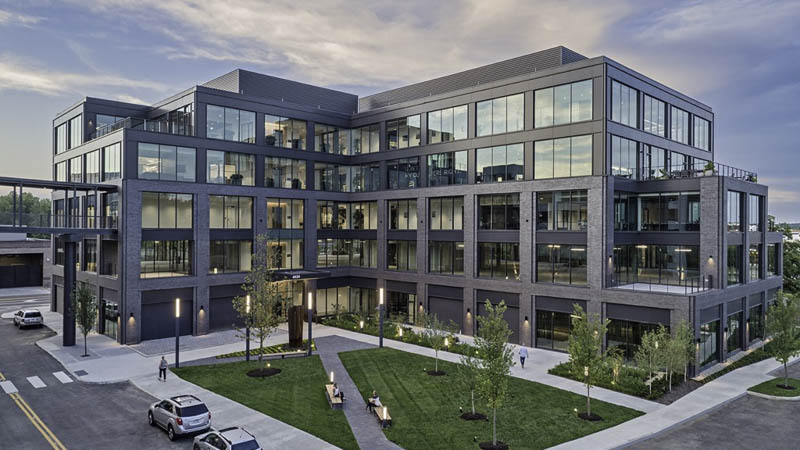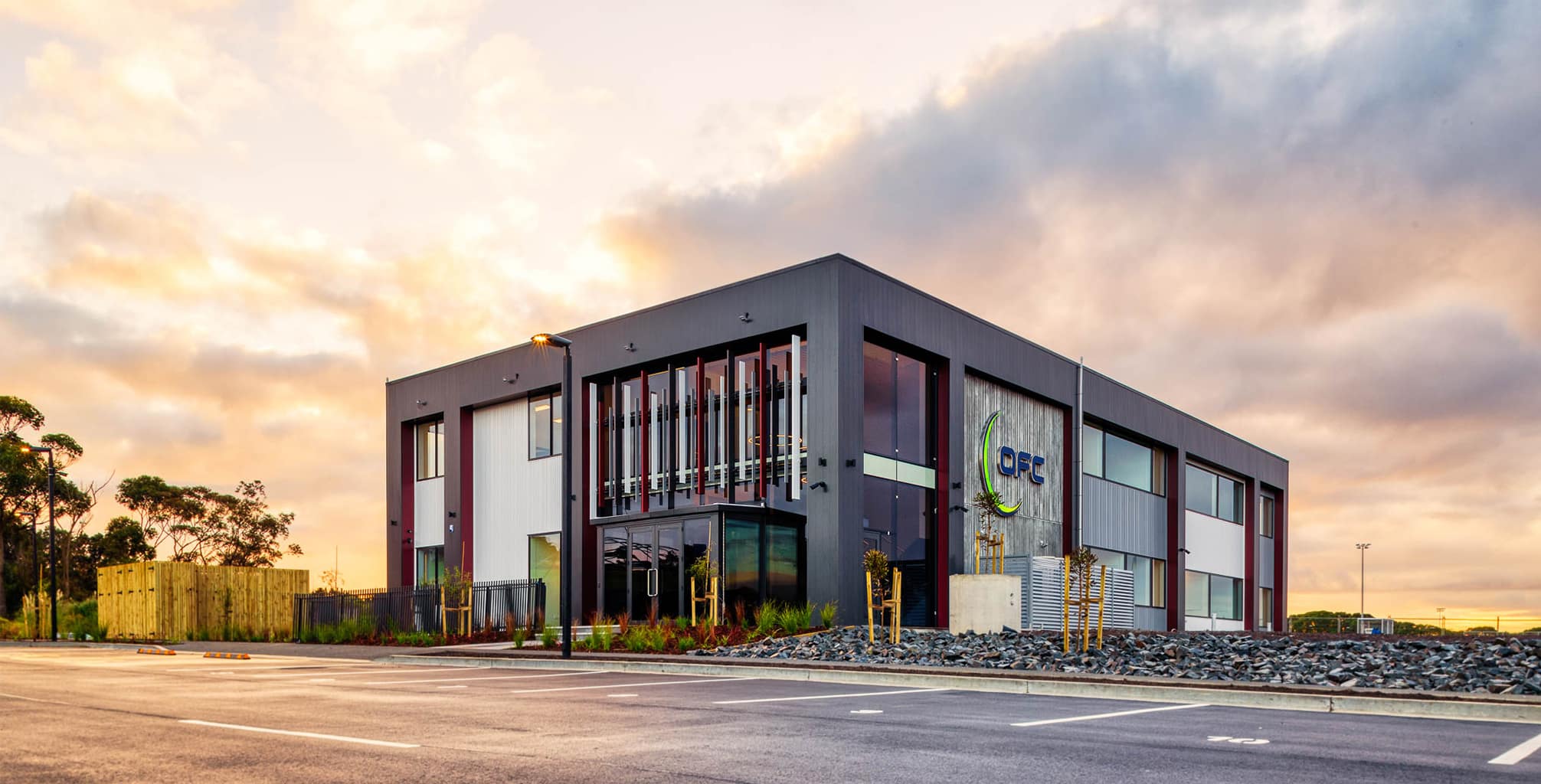Just How Commercial Architects Can Change Your Service Room With Professional Design Solutions
Commercial architects play a necessary duty in reshaping service environments. Their competence in layout can considerably improve both functionality and aesthetic appeals. By developing rooms that reflect a brand name's identification, they improve functional effectiveness and staff member fulfillment. The influence of their job extends beyond plain look. Recognizing the subtleties of partnership and sustainability can result in transformative results. What particular components make these transformations effective?
Recognizing the Role of Commercial Architects
Commercial architects play a crucial duty fit service atmospheres that are both practical and visually pleasing. They specialize in creating rooms tailored to the details requirements of organizations, guaranteeing that every square foot is used properly. These experts integrate elements such as spatial layout, lighting, and products to boost efficiency and employee well-being. By teaming up with customers, business architects collect insights into functional requirements and brand identity, converting these into cutting-edge designs.Additionally, they browse complex building regulations and zoning legislations, ensuring compliance while optimizing layout capacity. Their know-how includes sustainability practices, promoting energy efficiency and eco-friendly products in their projects. Through their creative vision and technical understanding, commercial architects not only create attractive spaces however also foster settings that advertise partnership and growth. Eventually, their payments significantly influence the overall success and photo of a service.
Advantages of Professional Design Providers

Customizing Areas to Your Brand Identity
Tailoring spaces to a brand's identification is vital for conveying its core values and mission. Commercial architects play a crucial function in boosting a service's aesthetic identity with thoughtful style choices. By lining up building components with brand principles, firms can develop atmospheres that reverberate with customers and staff members alike.
Mirroring Brand Values
Just how can a properly designed room symbolize a firm's core worths? Commercial architects play a crucial role in shaping settings that reverberate with a brand name's identification. By incorporating components such as color pattern, products, and formats, they create spaces that show the essence of business. A tech firm could opt for open layouts and modern-day furnishings to share development and partnership, while a luxury brand name might select elegant coatings and intimate rooms to stimulate exclusivity and class. Thoughtful design not just boosts performance yet additionally cultivates a strong connection in between staff members, clients, and the brand name. Ultimately, a well-crafted setting acts as a tangible depiction of a business's mission and vision, reinforcing its values at every touchpoint.
Enhancing Visual Identification
What components can efficiently raise a brand's aesthetic identification within an industrial space? Commercial architects play an essential duty in incorporating style features that reverberate with a company's principles. Color design, typography, and products can be tactically selected to mirror brand values while making sure aesthetic charm. In addition, including logos and brand images right into the design can produce a cohesive visual narrative. Illumination layout can even more improve the atmosphere, assisting customer perceptions and experiences (commercial architects). Format and furnishings choices must straighten with the brand's character, whether it's modern, standard, or innovative. Ultimately, a well-designed commercial room not just brings in consumers but likewise enhances brand name acknowledgment, developing a long lasting impact that promotes loyalty and engagement
Enhancing Capability and Efficiency
Enhancing functionality and efficiency in business rooms includes enhancing area utilization and designing operations that enhance operations. Architects concentrate on producing layouts that minimize lost room while helping with smooth adjustments between jobs. This strategy not just enhances efficiency but also adds to a more cohesive workplace.
Maximizing Room Utilization
Effective area utilization is a critical variable in business style, where the design has to balance aesthetics with performance (commercial architects). Architects utilize different methods to optimize offered square video footage while making sure that each location serves a distinct objective. By examining process, web traffic patterns, and customer needs, architects can develop designs that enhance both staff member efficiency and client experience. Multi-functional spaces, adaptable furniture setups, and maximized storage space remedies are necessary components in attaining this goal. Additionally, incorporating all-natural light and open areas promotes a much more inviting atmosphere, more elevating the utility of the setting. Inevitably, effective space application not only boosts functional effectiveness yet additionally contributes positively to the total brand name picture, making it an important factor to consider in industrial layout
Structured Workflow Layout
Just how can a properly designed process transform an industrial area into a hub of productivity? Streamlined process layout concentrates on maximizing the physical format and functional processes within a service environment. By purposefully preparing workstations, conference locations, and sources, i loved this architects can eliminate unnecessary activity and enhance cooperation. This thoughtful design minimizes distractions and helps with interaction, enabling staff members to concentrate on their jobs a lot more successfully. Additionally, incorporating innovation into the workflow can further automate procedures, decreasing time invested in regular jobs. Therefore, companies experience improved worker spirits and raised output, creating a dynamic ambience that fosters innovation. Ultimately, purchasing streamlined workflow design not just improves functionality yet likewise positions a business area for sustainable development and success.
Promoting Collaboration With Style
Although modern-day workspaces typically focus on specific productivity, the layout of industrial spaces progressively emphasizes cooperation as a key chauffeur of technology and group cohesion. Architects play a vital duty in producing environments that promote communication among workers. Open formats, multifunctional spaces, and purposefully put public areas encourage spontaneous discussions and brainstorming sessions.Incorporating aspects such as movable furnishings and adaptable conference room enables groups to reconfigure rooms based on their joint demands. Additionally, incorporating technology, like interactive whiteboards and video clip conferencing tools, improves the ability to communicate successfully, no matter of location.Natural light and biophilic layout components also add to an extra inviting atmosphere, promoting convenience and well-being, which are necessary for effective team effort. By concentrating on these facets, industrial architects can produce dynamic settings that not only boost cooperation yet additionally drive total business success.
Lasting Design Practices in Commercial Style

Case Studies: Successful Changes by Commercial Architects
The execution of sustainable style practices has not only reshaped the strategy to industrial style yet has also resulted in exceptional transformations in numerous service spaces. One notable instance is the redesign of a technology company's headquarters, where architects integrated natural light and environment-friendly wall surfaces, leading to improved staff member well-being and productivity. This improvement decreased energy expenses by 30% and enhanced the company's public image.In another instance, a retail store underwent a total overhaul, making use of recovered products and energy-efficient systems. This not just brought in eco-conscious consumers however also enhanced foot traffic by 25%. A third instance involved a business office that welcomed an open-plan design with adaptable workspaces, fostering collaboration among groups. The architects' concentrate on creating a lively and adaptable atmosphere considerably boosted worker fulfillment. These study exhibit exactly how business architects can produce impactful rooms that straighten with company objectives and sustainability initiatives.
Often Asked Questions
Just How Much Do Commercial Architecture Services Usually Price?
The price of commercial style services differs extensively, commonly varying from $100 to $250 per hour. Factors affecting prices include project intricacy, place, and the designer's experience, making it necessary for businesses to obtain comprehensive price quotes.
What Kinds Of Organizations Benefit Many From Commercial Architects?
Various businesses, including retail, hospitality, and corporate workplaces, substantially gain from industrial architects. These specialists enhance functionality, looks, and brand identification, guaranteeing rooms are enhanced for client involvement and staff member performance, ultimately promoting service development.
For how long Does an Industrial Design Job Normally Take?
The timeline for an industrial style job commonly varies from numerous weeks to several months. Factors influencing period include job complexity, governing authorizations, and collaboration amongst stakeholders, every one of which can impact total conclusion time.
Can I Work With a Commercial Architect for Renovations Just?
Yes, working with a commercial designer for improvements is viable. Several architects concentrate on improvement projects, giving proficiency in optimizing existing rooms while sticking to laws and improving functionality, visual appeals, and total worth of the service setting.
What Credentials Should I Search for in an Industrial Engineer?
